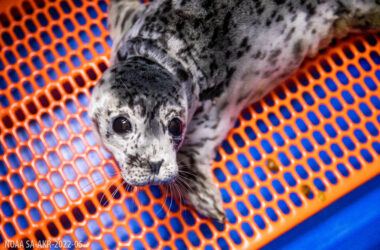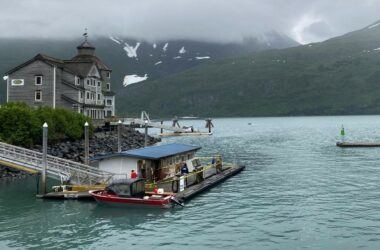The U.S. Fish and Wildlife Service will send hunters to a remote Aleutian island in an effort to prevent caribou from spreading as an invasive species.
Caribou were introduced to the island of Adak in 1958 to provide sport hunting opportunities to military personnel.
The animals swim from Adak to the wilderness island of Kagalaska which is in the Alaska Maritime National Wildlife Refuge.
Refuge manager Steve Delehanty said if that migration goes unchecked, the Kagalaskan Island could have a huge herd in a number of years and the invasive species could threaten wilderness vegetation.
Personnel from the U.S. Department of Agriculture will shoot the animals, if any are found, and the Fish and Wildlife Service will send four additional people to salvage meat from any caribou killed. That meat will be given to people who need it in Adak.
Those personnel will be on the island for two days late in May.
Adak is a 283-square-mile island 1,300 miles southwest of Anchorage. The military built an airfield on the island during World War II. It was used as a Naval Air Station until 1997.
The nearest native caribou are 500 miles away. Military officials requested that caribou be planted on Adak 57 years ago to give Navy personnel opportunities for recreational hunting.
While that was going on, sport hunters kept the herd at about 200 to 400 animals. After the base closed, the herd grew to an estimated 2,700 animals by 2012.
The channel between Adak and Kagalaska is only a few hundred yards.
Kagalaska has an inactive volcano but no trees. Vegetation is mostly tundra and lichens with mosses and alpine plants on uplands and mountain slopes.






